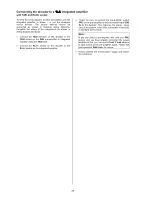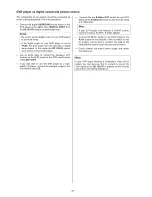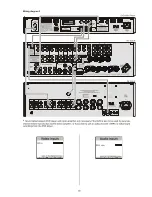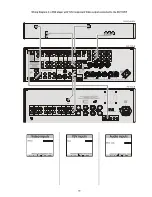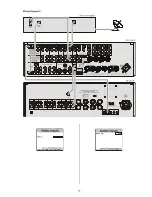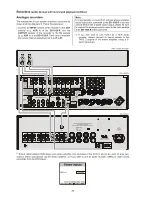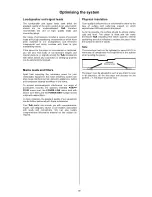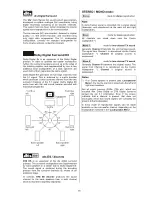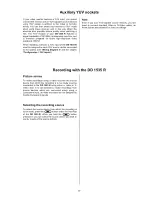
52
Dolby Pro Logic IIx Surround
In this process several independent signal channels (left,
centre, right and surround (rear)) are recorded using two
channels and a special encoding process. Since this
process only requires two recording channels, it is
compatible with many picture / sound systems which are
already widely in use (CD, video recorder, TV etc.).
The information is decoded at playback time and
reproduced in the listening room via four (left, right, 2 x
rear) loudspeakers, although five speakers (with an
additional front centre speaker) are preferable. Dolby Pro
Logic encoded material is currently available mainly in
the film and video arena, recorded on video cassettes
and DVDs, but a large number of television programmes
are now being produced and transmitted using Dolby
Surround.
DTS Neo:6
The
DTS Neo:6
process can be used both for encoded
stereo material (see Dolby Pro Logic II Surround) and
also for un-encoded stereo material.
The Neo:6 decoder generates – according to setting - up
to 6 channels (left, centre, right, 2 x side, back centre)
from this; the back centre channel can also be
reproduced by 2 separate speakers if they are available.
Dolby Digital is a digital multi-channel surround system
which was developed specifically for spatial sound
reproduction in connection with cinema films. The
process utilises five separate sound channels: three front
channels (left, centre, right) and two surround channels.
A sixth independent bass effect channel is also present,
catering for low frequency effects (
LFE
). That is why
such systems are said to offer
5.1
channels.
In comparison with Dolby Pro Logic II, Dolby Digital
provides two independent surround channels which
generate genuine spatial stereo sound, offering the same
realistic stereo reproduction as provided by the front
channels.
The integral Dolby Digital decoder provides the means of
obtaining a genuine digital Dolby stereo cinema
presentation in your own living room. The discrete digital
recording process and the five playback channels
guarantee a very wide dynamic range and accurate
spatial orientation.
The dynamic range is the difference in volume between
the quietest and loudest passages of a recording. The
original soundtrack of a film generally features an
extremely wide dynamic range which the surround
receiver can reproduce in full.
Unfortunately not all listening rooms, and not all times of
day, are suitable for exploiting the full dynamic range.
For example, it may be necessary to take your
neighbours’ feelings into account - especially in the late
evening hours.
For this reason it is possible to reduce the dynamic
range of Dolby digital encoded sound sources in such a
way that quiet passages (e. g. whispered conversations)
are reproduced somewhat louder, while loud passages
(e. g. massive explosions) are reduced in volume slightly
(see
'
Main Menu
'
).
Summary of Contents for DD 1535 R
Page 1: ...V 1 3 Order No 9103 0321 OPERATING INSTRUCTIONS DD 1535 R...
Page 14: ...14...
Page 40: ...40...
Page 44: ...44...
Page 45: ...45 Wiring Diagram 4 a DVD player with YUV Component Video output connected to the DD 1535 R...
Page 47: ...47 Wiring Diagram 5...
Page 62: ...62...
Page 64: ...elektroakustik GmbH Co KG Herford Deutschland Germany...

